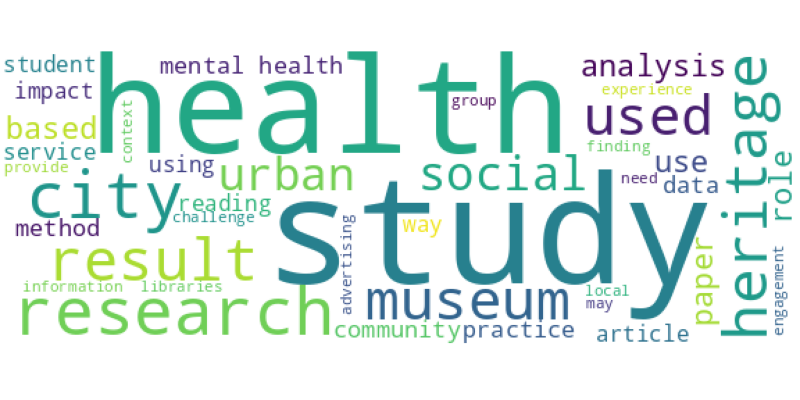| Id | 2308 | |
| Author | Jacques R.M.; Ahmed R.; Harper J.; Ranjan A.; Saeed I.; Simpson R.M.; Walters S.J. | |
| Title | Recruitment, consent and retention of participants in randomised controlled trials: A review of trials published in the National Institute for Health Research (NIHR) Journals Library (1997-2020) | |
| Reference | Jacques R.M.; Ahmed R.; Harper J.; Ranjan A.; Saeed I.; Simpson R.M.; Walters S.J. Recruitment, consent and retention of participants in randomised controlled trials: A review of trials published in the National Institute for Health Research (NIHR) Journals Library (1997-2020),BMJ Open 12 2 |
|
| Link to article | https://www.scopus.com/inward/record.uri?eid=2-s2.0-85124680218&doi=10.1136%2fbmjopen-2021-059230&partnerID=40&md5=14e7b882b6019d97bf16ade22c801bac |
|
| Abstract | Objectives To review the consent, recruitment and retention rates for randomised controlled trials (RCTs) funded by the UK's National Institute for Health Research (NIHR) and published in the online NIHR Journals Library between January 1997 and December 2020. Design Comprehensive review. Setting RCTs funded by the NIHR and published in the NIHR Journals Library. Data extraction Information relating to the trial characteristics, sample size, recruitment and retention. Primary and secondary outcome measures The primary outcome was the recruitment rate (number of participants recruited per centre per month). Secondary outcomes were the target sample size and whether it was achieved; consent rates (percentage of eligible participants who consented and were randomised) and retention rates (percentage of randomised participants retained and assessed with valid primary outcome data). Results This review identified 388 individual RCTs from 379 reports in the NIHR Journals Library. The final recruitment target sample size was achieved in 63% (245/388) of the RCTs. The original recruitment target was revised in 30% (118/388) of trials (downwards in 67% (79/118)). The median recruitment rate (participants per centre per month) was found to be 0.95 (IQR: 0.42-2.60); the median consent rate was 72% (IQR: 50%-88%) and the median retention rate was estimated at 88% (IQR: 80%-97%). Conclusions There is considerable variation in the consent, recruitment and retention rates in publicly funded RCTs. Although the majority of (6 out of 10) trials in this review achieved their final target sample; 3 out of 10 trials revised their original target sample size (downwards in 7 out of 10 trials). Investigators should bear this in mind at the planning stage of their study and not be overly optimistic about their recruitment projections. © 2022 American Society of Civil Engineers. |
|
| Keywords | Cost-Benefit Analysis; Humans; Informed Consent; Periodicals as Topic; Publications; Randomized Controlled Trials as Topic; Research Report; adult; clinical assessment; data extraction; female; human; male; medical research; outcome assessment; public health; randomized controlled trial (topic); review; sample size; systematic review; cost benefit analysis; informed consent; publication; research |
Wordcloud:



